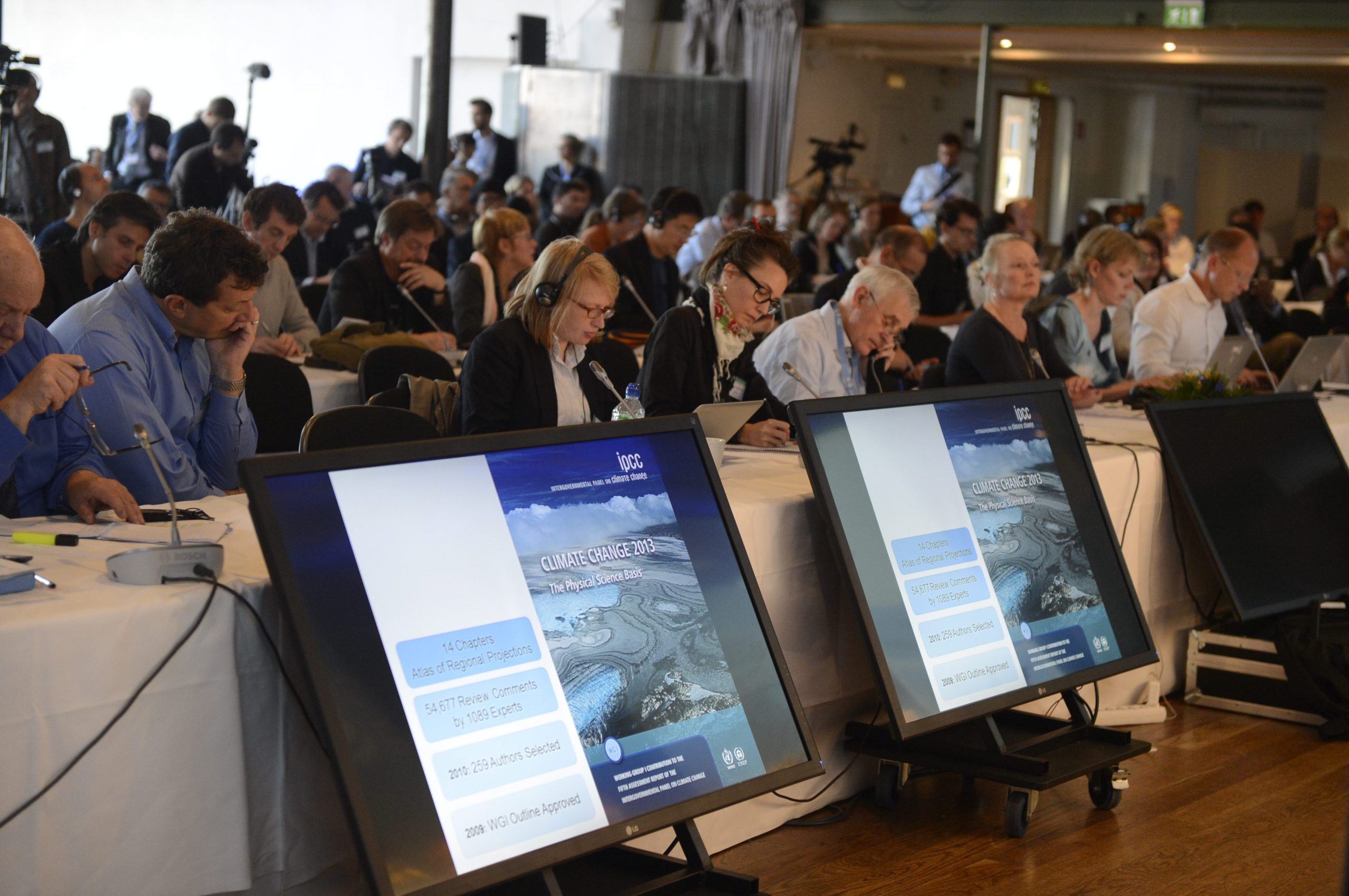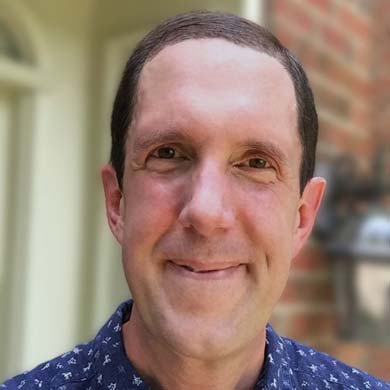
Media representatives follow the U.N. IPCC climate report presentation, in Stockholm, in Sept. 2013. When covering science issues, like climate change, journalists should bring more nuance to their reporting
Robert Boyle made every effort to repeat his experiment successfully. It meant killing yet another bird. But to convince his colleagues that animals need air to live, Boyle had to show them. “Take no one’s word for it” — Nullius in verba — was the motto they all followed in their scientific pursuits.
Placing a bird inside a glass vessel, Boyle then sealed the vessel and pumped out the air. Eventually the bird “dyed with her breast upward, her head downwards, and her neck awry,” Boyle wrote. Having observed it for themselves, Boyle’s colleagues were satisfied that animals need air to live. But there weren’t any scientific journals to publish in at the time. So Boyle self-published his account in 1660, describing also his apparatus so that readers could repeat the experiments for themselves.
Even when science seems settled, history shows we will keep experimenting, trying to puzzle it out. That’s because scientific truths require caveats, the Latin word for “let a person beware.” Boyle’s caveat: Not all animals have been tested. So, for more than a hundred years, people suffocated all varieties of creatures to prove animals need air to live.
For journalists deciding when or whether to cover scientific studies, caveats are a challenge. Today’s scientific caveats are often difficult to understand and complicated to convey. Instead, journalists often use what I call journalistic caveats, or phrases such as “a single study showed” or “this research has not been peer reviewed.” Doing so, however, can project too much certainty about scientific results. For when newly reported scientific results contradict previous ones, the resulting whiplash contributes to public distrust and even cynicism about science and journalism. For the biggest stories in science — Covid-19 and climate change — that distrust and cynicism can be deadly.
With Covid-19, for example, how many times has mask guidance changed in the ongoing pandemic? Because so many news organizations once authoritatively reported that masks were unnecessary — without any scientific caveats (including simply “the potential of this [mask] intervention is not well understood”) — reporting subsequent guidance to wear masks was met by confusion at best and derision at worst. That makes it easier for politicians to push their own narratives, persuading some people to ignore mask guidance, which increases the likelihood of infection and death.
With climate change, politicians have pushed their own narratives for decades, misappropriating the doubt that’s inherent in science. Scientific consensus about the “discernible human influence on global climate” has only grown since that famous statement was written in the 1995 report from the Intergovernmental Panel on Climate Change. When research funded by oil companies undermined that consensus — in much the same way tobacco companies tried to obscure the harmful effects of smoking — journalists as a whole didn’t do enough to explain that uncertainty around the cause of global warming, while present, was actually very minimal — often setting up the false idea that there were two sides to this story.
Contrary to popular belief, science never proves anything right. Science works by proving guesses and falsehoods wrong. That’s why scientific results come with caveats.
There were plenty of caveats included in the 2020 Sturgis study that tied that year’s annual motorcycle rally to hundreds of thousands of new Covid-19 cases and billions of dollars in public health costs. Additionally, the publisher included a kind of caveat of its own, posting it to its “discussion paper series” and signaling the study was just a working paper — a preprint — that wasn’t peer-reviewed. Even so, many headlines — often all that people see, especially on social media — only included the most basic journalistic caveats, such as “a study says.”
Although many scientists were quick to criticize the Sturgis research for all its flaws, it became a journalistic bonanza when the governor of South Dakota, the state that hosted the rally, loudly criticized the study. Even as many experienced healthcare and science journalists had warned early on in the pandemic against reporting on preprints, the lure of new information readily available to fill a never-ending news hole is hard to escape — especially at a time when people are clamoring for information. But there’s no question that leaving out scientific unknowns and uncertainties is low quality science reporting and does not help the public know, understand, or navigate the risks associated with the pandemic.
For better public service, journalists should strive to raise the quality of the science reporting by including some of the complexity of scientific caveats. After all, there’s now plenty of peer-reviewed research — starting over a decade ago with this study on news coverage of cancer research — that shows audiences view both scientists and journalists as more trustworthy when news coverage includes caveats and the caveats are attributed to the scientists responsible for the research rather than scientists unaffiliated with the research. Still — here comes a caveat — the author writes, there may be other variables at play, including whether prolonged exposure to news that’s been stripped of hedging affects audience perceptions of trustworthiness. Another important note: News reports that included scientists hedging about their own conclusions ran counter to audience expectations.
As a science journalist, if a scientist isn’t forthcoming in telling me about what is still unknown, I am ending that interview. Indeed, I’ve found that the best scientists are excited about what they don’t know and can even be even giddy about the prospects of proving themselves wrong.
Boyle was forthright about what he didn’t know. Having repeatedly demonstrated to his peers that animals need air to live, Boyle still had his doubts. At the time, scientific convention held that air was an element, along with earth, fire, and water. So after cataloguing his doubts, Boyle concluded the description of his experiment with the Latin equivalent of “I choose rather to confess cautious ignorance than to profess false knowledge.”
About 100 years later, an experimentalist named Joseph Priestly started openly defying that scientific convention, investigating what he called “different kinds of air.” In 1774, he independently discovered what we now call oxygen. Other scientists then refined Boyle’s results about animals needing air to say instead that animals need oxygen to live. Over the next couple centuries, other scientists discovered the processes through which animal cells convert oxygen and sugar into chemical forms of energy, including Hans Krebs, who won the 1953 Nobel Prize for his discovery of what scientists now call the “Krebs cycle.” A host of other scientists isolated that energy production process within the mitochondria inside our cells.
Still a caveat remained: Not all animals have been tested.
Then, in February 2020, scientists announced the discovery of an animal — a small parasite that infects the flesh of Chinook salmon — that lacks the genes to produce mitochondria. Science magazine’s headline and subhead included both a caveat and Boyle’s cautious ignorance: “This is the only known animal that doesn’t need oxygen to survive: It’s still unclear how it gets energy.”
The public service of journalism requires earning and keeping the public’s trust. Part of that ongoing task is conveying how science works and that for scientific truths, doubt persists forever. Including scientific caveats in every story is just acknowledging science for what it is: a practice of unending questioning that has led to a way of thinking that has, in turn, transformed our lives.
Robert Frederick, a 2021 Nieman Fellow, has been a science journalist for two decades, including stints on staff with St. Louis Public Radio, Science, and American Scientist. He also teaches science journalism for Harvard’s Division of Continuing Education.


